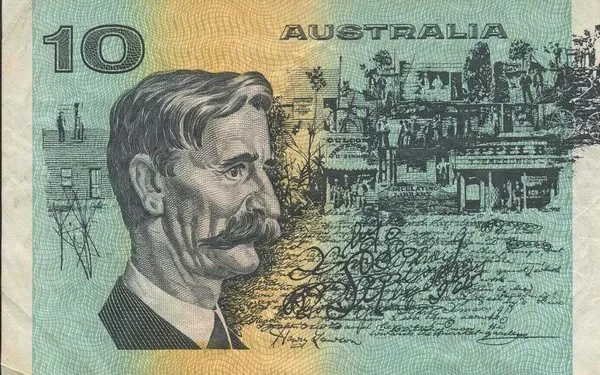The Reserve Bank of Australia (RBA) plays a pivotal role in shaping the country’s economic landscape through its monetary policy decisions.
One of its most significant tools in achieving its economic goals is the cash rate. In this article, we will explore the RBA’s cash rate, its significance, and delve into the question, “What is the current cash rate RBA?” We will also clarify the distinction between the cash rate and the RBA rate, as these terms are often used interchangeably but hold distinct meanings in the financial world.
An Overview of RBA Cash Rate
The Reserve Bank of Australia’s cash rate, often referred to simply as the “cash rate,” is the official interest rate at which financial institutions lend or borrow money among themselves on an overnight basis. The RBA uses the cash rate to influence economic activity, price stability, and employment. It is set by the RBA’s board of directors at its monthly meetings. The cash rate serves as a benchmark for all other interest rates in the country, impacting everything from savings account interest rates to mortgage rates.
The RBA’s Monetary Policy
The RBA’s primary objective is to maintain price stability, which means keeping inflation within a target range, typically between 2% and 3%. To achieve this goal, the RBA employs monetary policy tools, with the cash rate being the most crucial one. The RBA adjusts the cash rate to manage inflation and promote economic growth. If inflation is rising above the target range, the RBA may increase the cash rate to cool down the economy. Conversely, if inflation is below the target range, it may decrease the cash rate to stimulate economic activity.
The RBA’s Role in Economic Management
The RBA’s cash rate influences borrowing and lending costs for businesses and consumers. When the RBA raises the cash rate, it becomes more expensive for banks to borrow money, which, in turn, increases the interest rates offered to consumers. This has a cooling effect on the economy by reducing borrowing and spending.
Conversely, when the cash rate is lowered, it becomes cheaper for banks to borrow, resulting in lower interest rates and encouraging borrowing and spending.
What is the Current Cash Rate RBA?
It’s crucial to note that the cash rate is subject to change, and the RBA may adjust it during its monthly meetings based on economic conditions and its monetary policy goals. Therefore, it is essential to check the latest cash rate information through official sources, such as the RBA’s website, to ensure you have the most up-to-date information.
The Role of Financial Markets
Financial markets closely monitor the RBA’s cash rate decisions, as these decisions have a significant impact on asset prices, exchange rates, and investment strategies. Investors often react to changes in the cash rate by adjusting their portfolios to take advantage of potential opportunities or mitigate risks associated with interest rate movements.
The Connection Between Cash Rate and Inflation
One of the key factors the RBA considers when setting the cash rate is the current and expected inflation rate. If inflation is rising rapidly and threatens to exceed the target range, the RBA may raise the cash rate to control it. On the other hand, if inflation is low or falling, the RBA may lower the cash rate to stimulate economic activity and push inflation back into the target range.
What is the Difference Between Cash Rate and RBA Rate?
The terms “cash rate” and “RBA rate” are often used interchangeably, but they refer to slightly different concepts. The cash rate, as explained earlier, is the interest rate at which banks lend or borrow money from each other. It is the key policy tool used by the RBA to influence the broader economy.
In contrast, the RBA rate is a broader term that encompasses all the interest rates set by the Reserve Bank of Australia, including the cash rate. The RBA sets various interest rates for different purposes, such as the cash rate for influencing the short-term interest rates and the target for the overnight money market. Additionally, the RBA sets rates on exchange settlement balances held by banks, which also influence money market operations. These combined rates make up the RBA rate, which reflects the entire interest rate structure managed by the RBA.
Implementing Monetary Policy
The RBA manages its monetary policy by using the RBA rate, which includes the cash rate as its primary component. Changes in the RBA rate have a ripple effect on various interest rates, influencing the cost of borrowing and lending throughout the financial system. These changes, in turn, affect consumer spending, business investments, and the overall state of the economy.
Transmission of RBA Rate to Financial Markets
The RBA rate, particularly the cash rate, directly influences short-term interest rates and indirectly influences longer-term interest rates. When the RBA lowers the cash rate, banks typically pass on these reductions to borrowers, resulting in lower interest rates for home loans and other consumer loans. Conversely, when the RBA raises the cash rate, banks often increase interest rates for borrowers. This transmission mechanism is how the RBA’s policy decisions affect the broader financial landscape.
Conclusion
In conclusion, the Reserve Bank of Australia’s cash rate plays a pivotal role in the country’s economic management. It is the official interest rate that influences the cost of borrowing and lending money in the financial system, impacting everything from mortgage rates to savings account interest rates. The question, “What is the current cash rate RBA?” is an important one, as it helps individuals and businesses understand the prevailing interest rate environment and make informed financial decisions. It’s also essential to differentiate between the cash rate and the RBA rate, as they represent distinct concepts within Australia’s monetary policy framework. Staying informed about these rates is crucial for anyone navigating the Australian financial landscape.
Related Topics:
Everything You Need to Know About How RBA Influences Interest Rates
A Deep Dive into RBA’s Work
Three Main Reasons Why the RBA Lifted Interest Rates



























